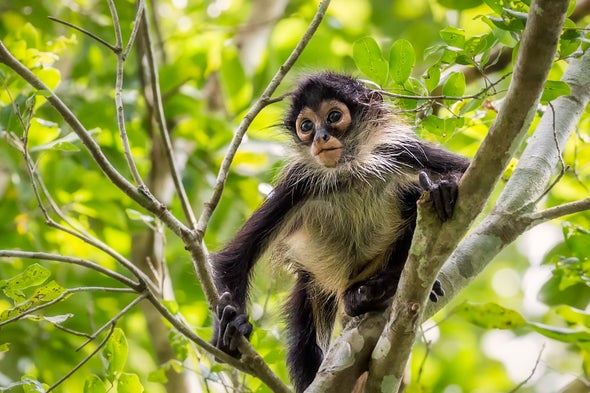This is Scientific American's 60-second Science, I'm Christopher Intagliata.
The hardest part of chasing monkeys through the jungle isn't the snakes. "The snakes aren't going to attack you if you don't have contact with them." It's simply keeping up with the monkeys. "They are jumping from one tree to another tree so they don't care if the landscape is difficult or if there is a river."
José Domingo Ordóñez-Gómez. He's a primatologist at the German Primate Center in Göttingen. The reason he was pursuing 35 spider monkeys through the rainforests of southern Mexico was to record their whinnies.

By analyzing more than 500 calls, he found that when a monkey was separated from the group by more than 40 meters—or 130 feet—it produced a lower-pitched call than when the same monkey was nearby the group. Ordó?ez-Gómez thinks the pitch choice may be because lower-frequency calls are better suited to travel long distances through dense jungle.
The findings are in the journal PLOS One.
Ordóñez-Gómez also found that other spider monkeys responded back more quickly when they heard one of the low-pitched calls, compared to regular whinnies—perhaps, he says, because the deeper calls really get the attention of eavesdropping monkeys. It's a relatable feeling for any human primate who's heard a crying baby.
Thanks for listening for Scientific American — 60-Second Science. I'm Christopher Intagliata.












